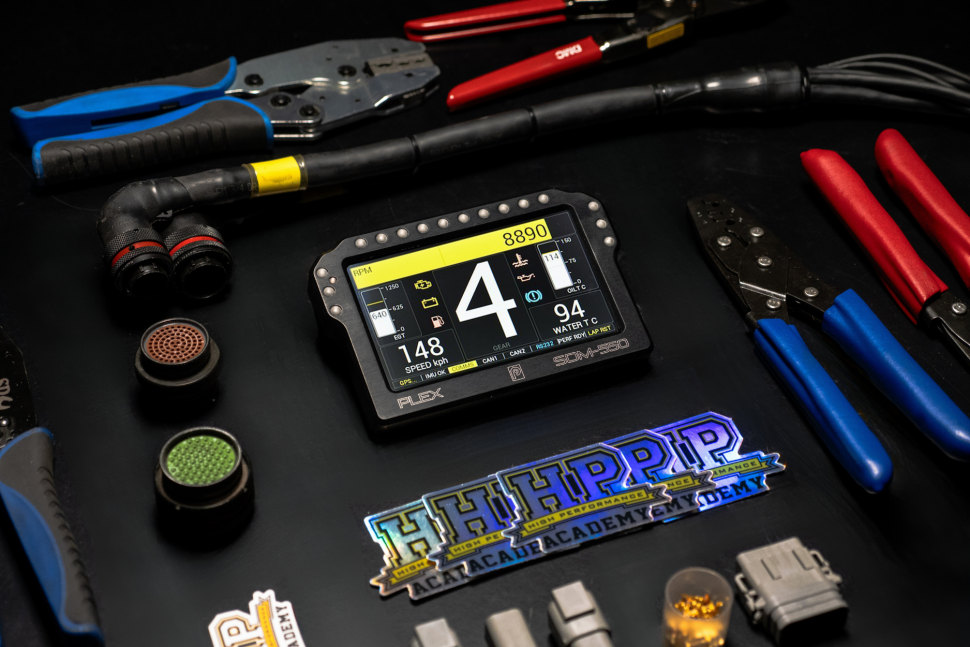| 00:00 |
- One of the first physical tasks we undertake once our wiring harness design process is complete is the preparation of the individual wires from which we're going to build our harness.
|
| 00:10 |
To do this, we can consult our documentation which will tell us how far an individual wire needs to travel through our harness sections to reach its destination.
|
| 00:19 |
We then add 20% to this length and cut a length of wire in the correct colour and size to that length.
|
| 00:27 |
The reason we add 20% to the wire length is that the wire will twist around the harness sections as it travels along their length meaning an individual wire is actually longer than the harness sections through which it's laid.
|
| 00:39 |
It would be possible to calculate the exact extra length required as we've placed the wire in a specific layer during our design process and we also know the twist angle and the harness section diameters but working this out takes more time than it's worth and only a small error could result in the wire being too short.
|
| 00:57 |
I find a blanket rule of adding 20% to the wire lengths as I cut them does not result in unacceptable wastage and it is much much easier to trim 100 mm off a length of wire as opposed to removing a wire and relaying it because it was too short to reach its destination.
|
| 01:15 |
The process of cutting our wires is relatively straightforward and has been covered quite well in the wiring fundamentals course and the practical club level course and it does follow the same pattern.
|
| 01:26 |
We'll just go through a couple of extra details now that you need to be aware of when you're dealing with our Tefzel insulated wire.
|
| 01:33 |
The first of which is that this wire does have a much tougher and thinner insulation jacket.
|
| 01:38 |
And for that reason you need to make sure you've got a nice really sharp pair of flush cutters to make those cuts with.
|
| 01:45 |
You also want to make sure that you keep these flush cutters separate in your tool kit and they're only used for the purpose of cutting our Tefzel insulated wire as cutting other materials with them will dull the blades quite quickly.
|
| 01:57 |
By consulting our construction plan, we can determine all the wire lengths that we're going to need for the upcoming construction step.
|
| 02:04 |
I like to cut all those lengths of wire at one time and then store them individually in plastic bags.
|
| 02:10 |
That means you're not having to clutter up your workspace with extra tools when you get to that construction step..
|
| 02:16 |
The process of stripping the insulation from our wire is also very much the same as covered in our other wiring courses, however we are going to use some more specialised tooling for the job and that helps us deal with the thin and tough insulation jacket on our wire here.
|
| 02:32 |
The Ideal Custom Stripmaster Light wire strippers are a good choice.
|
| 02:37 |
They are a little bit more expensive than the other wire strippers we've previously used however they will reliably strip from a 24 to a 16 gauge wire and even better than that is the Ideal Ergo Elite range of wire strippers.
|
| 02:51 |
These are much lighter in the hand and much more ergonomic as well and they will strip from a 26 to a 16 gauge wire.
|
| 03:00 |
As mentioned, for our flush cutters, you also want to keep your wire strippers segregated in your tool kit and make sure they're only used for stripping the Tefzel insulated wire.
|
| 03:10 |
Using them for stripping other types of wire will quickly dull the blades and render them ineffective.
|
| 03:15 |
The combination of using our precision wire strippers and some really nice sharp flush cutters is guaranteed to give you a nice parallel cut on all the end of your wires and a really nice strip length as well that won't birds nest out the wires and it'll mean they're going to be very easy to install into the terminals.
|
| 03:34 |
When it comes to determining the strip length, that is going to vary depending on the application in which you're working and we will discuss that in the appropriate modules.
|





